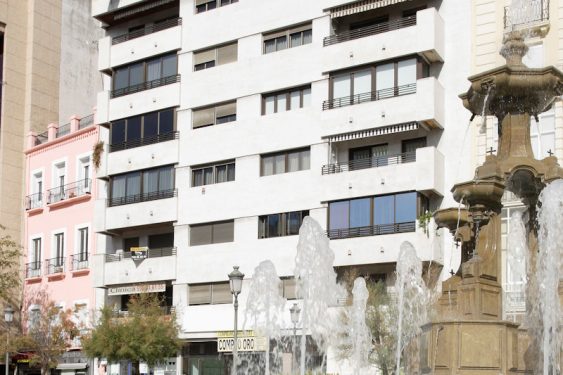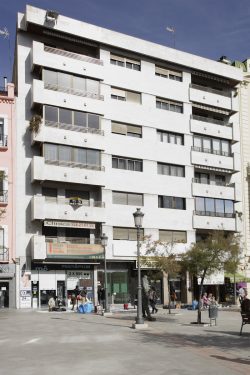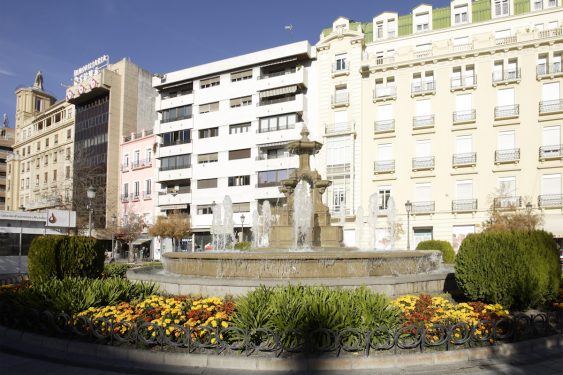Location of the building, demolished in the 70s, where the Lorca family lived between 1917 and 1933. Lanz, Falla or Juan Ramón passed through there.
The second and third floors of 31 Acera del Casino, which also included a tower, were the home in Granada where the Lorca family lived for most years.
The building was razed in the nineteen seventies with little opposition from the citizens and an apartment block was built in its place.
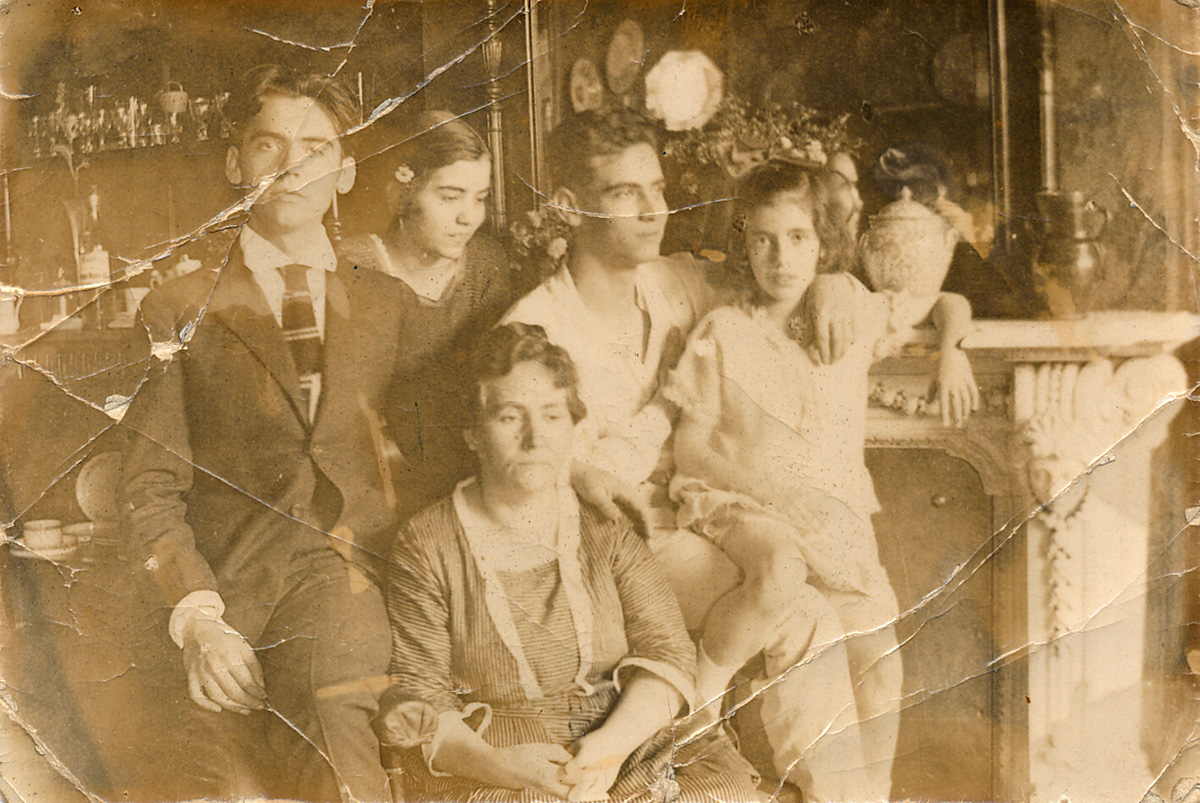
They lived there from 1917 -when they left the flat on Gran Vía that they had occupied for only one year- until 1933, when Lorca’s parents moved to Madrid. The house, according to the description of Isabel García Lorca, “was “tinged with luxury” and had an extraordinary significance in the life and work of the poet and even in the history of international music and puppet theater. Moreover, it represented the “ideal” of Don Federico: it was near the Casino, the Swiss cafe and the theaters. The stay was only interrupted every summer, from 1926, to move to the Huerta de san Vicente (San Vicente Farmhouse) and occasionally, before that, to the spa of Lanjarón to take the waters. Years of quiet and provincial life.
On January 6, 1923 a puppet show was organized in the house of Acera del Casino that would go down in history, devised by Federico with the help of Manuel de Falla and Hermenegildo Lanz.
According to Isabel García Lorca’s description, on the second floor was the entrance, an octagonal courtyard with a balcony on each side. To the left of the hallway was the dining room. The room with the marble fireplace, reproduced in different photographs, was the father’s room: there he read the newspaper and received visitors, almost always peasants who came to consult.
Federico used to take refuge in the glazed terrace from where he could see the valley, Sierra Nevada, the Alhambra, the Albaycín and the hermitage of San Miguel Arcángel. Lorca also shared with his brother Francisco a large room and a small studio.
Mother, on the other hand, preferred the cabinet where Federico hung several paintings by Dalí. Among them a disturbing female nude that was the talk of Granada, and the so-called “painting of the pears”, which appears reproduced in photos of the time and which visitors tried to interpret as a “bottle, a piece of gruyere cheese and a piece of white watermelon”.
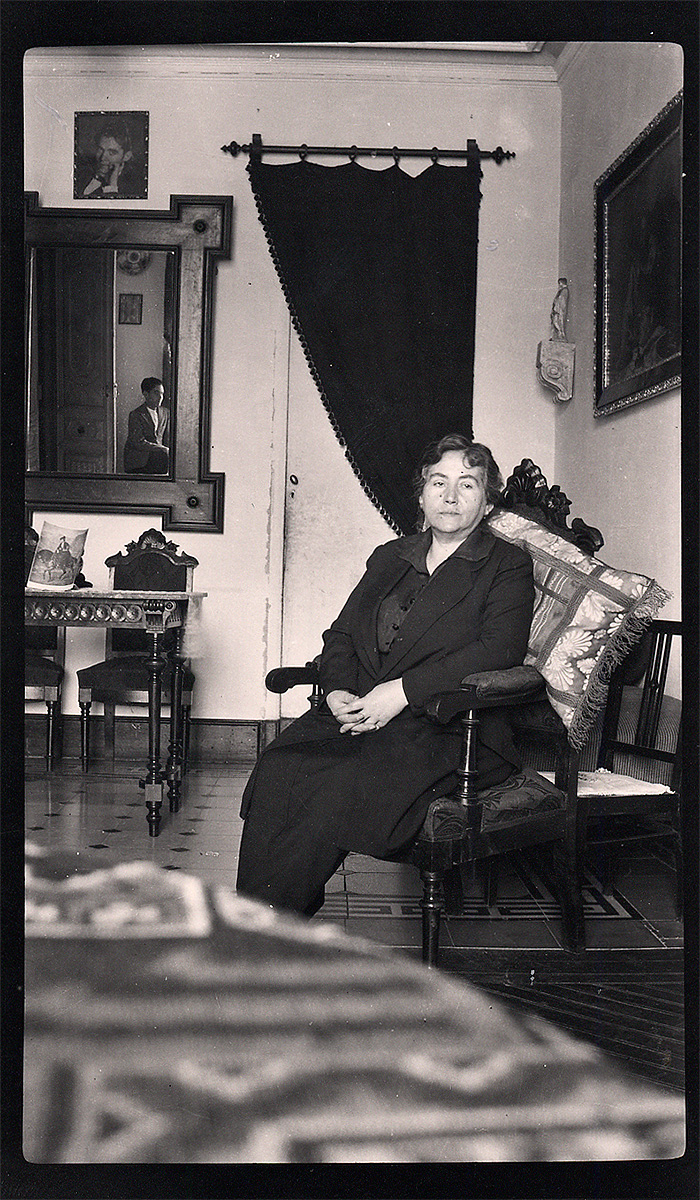
In the living-room was the half-grand piano that his father gave Federico and on which Manuel de Falla played for the first time an instrumental version of Stravinsky’s History of the Soldier.
On January 6, 1923, a puppet show that would go down in history was organized in the house of Acera del Casino. The excuse was a gift from Federico to his sister Isabel. For some time Lorca had wanted to recover the old puppet theater but the function also transcended that. It was the antecedent of the premiere, in June of that year but in Paris, of Master Peter’s Puppet Show by Falla. On that day the entremés The Two Talkers, The Mystery of the Magi and The Girl Who Waters the Basil and the Inquisitive Prince, a folk tale that Federico adapted for the stage, were performed. Finally, the aforementioned piano version of Stravinsky’s History of the Soldier, which Falla performed on Federico’s instrument, was premiered. There were also pieces by Debussy, Albéniz, Ravel, as well as medieval cantigas and carols. The performance was closely related to the 1918 commission from Paris by the Marquise de Polignac of the Master Peter’s Puppet Show composed in the house on Antequeruela street.
Federico worked as author, artistic director and puppeteer; Manuel de Falla was conductor and performer, and Hermenegildo Lanz assembled the puppet play, devised the scenery, carved the puppets’ heads and painted 150 flat figures.
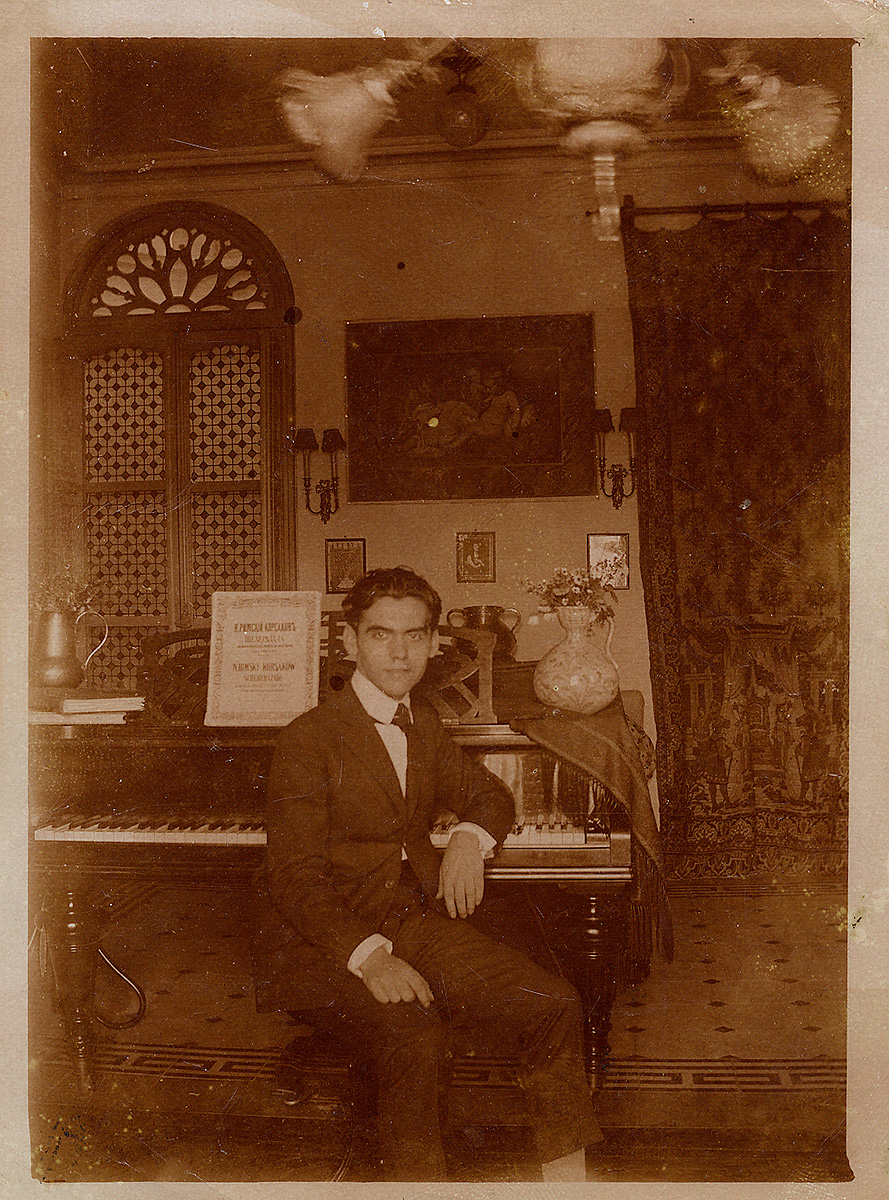
In a letter to the musicologist Adolfo Salazar, dated January 1, 1922, Lorca describes how he conceived with Falla the project of the Noches de Reyes concert a year earlier. On December 31, 1921, Lorca, with a group of musicians from the municipal band, had performed a serenade under the balconies of Falla’s house in the Antequeruela: “Well,” Federico explains, “this morning he comes to my house and tells me that the idea I had of making a puppet theater must be pursued, and he tells me to tell you so to encourage you to finish the Cristobita, which I already see as the episode of the Blackjack Puppet Theater. Falla commits himself to make music like last night’s! For other things, and assures me that Don Igor and Ravel would immediately set to work. Manuelito thinks, if we do this, to tour Europe and America with our puppet theater that would be called: ‘The Blackjack Puppet Theater of Granada’.”
Lorca speaks of the Noche de Reyes (Twelfth Night) of 1923: “On another day I had organized a play in my house for my little sisters (…). Three days before the premiere, I went into Falla’s house and heard the piano playing. I bang on the door with my knuckles… he doesn’t hear me … I knock louder… I finally enter… The maestro is sitting at the instrument in front of the score by Albéniz. Well, I am preparing for the concert in your play. That’s how Falla is, to entertain some children he was perfecting himself, he studied… Because Falla is that, conscience and spirit of perfection”.
(Interviews with Pablo Suero dated 1933 and published in the Noticias gráficas newspaper of Buenos Aires, October 11 and 15, 1933).
Manuel de Falla and his sister María del Carmen were invited numerous times by the Lorcas. They were regulars on Christmas Eve. After dinner, Federico and Falla “together at the piano, with the accompaniment of lids, pans, zambomba drums, rattles and a fork rubbing a few bottles of Anís del Mono (Monkey Anise)” would perform Christmas carols and then go up to the Albaicín for the rooster’s mass (Midnight Mass), according to Isabel García Lorca.
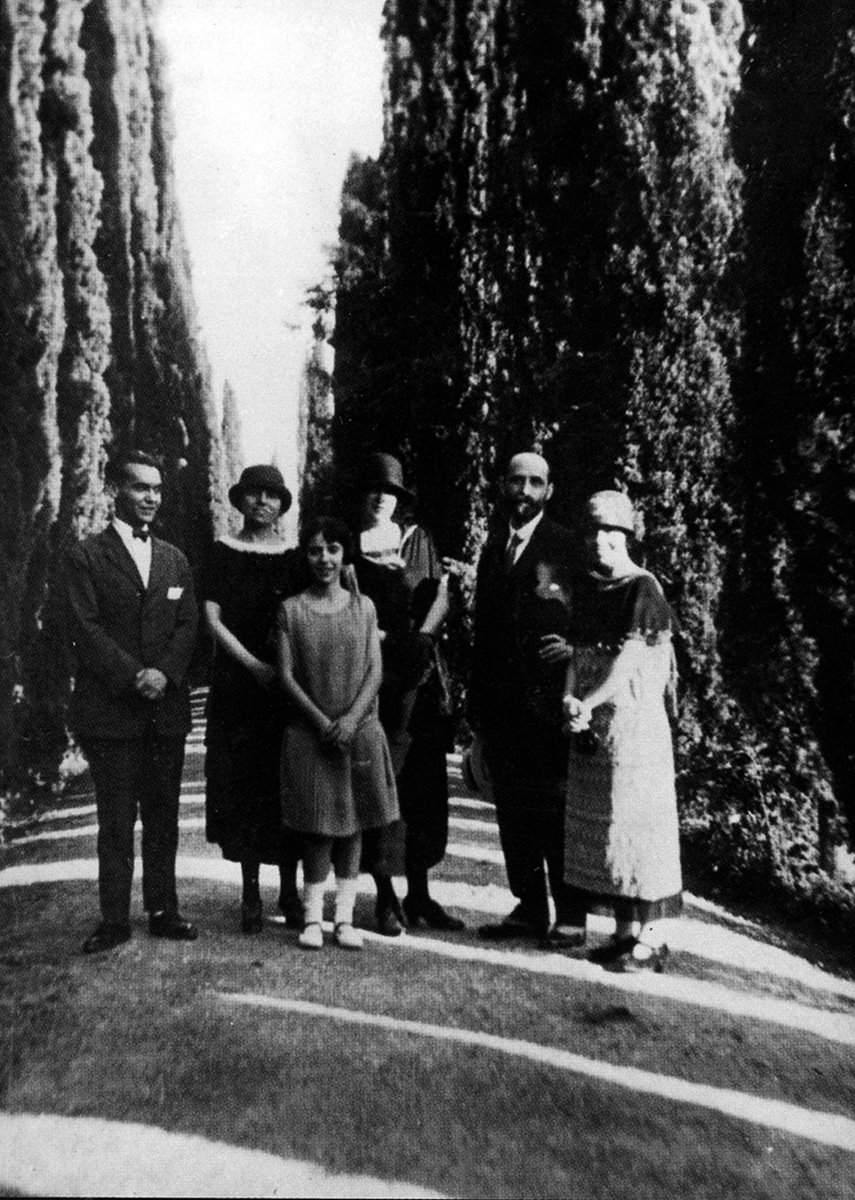
Among the illustrious visitors to the house on the Acera del Casino were Juan Ramón Jiménez and Zenobia Camprubí in the summer of 1924 invited by García Lorca and Falla. The first visit is recorded by Isabel García Lorca in her memoirs: “Juan Ramón showed up at the house in the afternoon the same day he arrived and we decided to take him in a horse-drawn carriage, not in a car, for a trip around the Alhambra. Needless to mention the fascination, the emotion he showed when he crossed the Arco de las Granadas (Arch of the Pomegranates).”
Tu elegía, Granada, la dicen las estrellas
[Your elegy, Granada, is spoken by the stars]
que horadan desde el cielo tu negro corazón.
[that pierce from the sky your black heart.]
La dice el horizonte perdido de tu vega,
[It is said by the lost horizon of your valley,]
la repite solemne la yedra que se entrega
[it is repeated solemnly by the ivy that surrenders itself]
a la muda caricia del viejo torreón.
[to the mute caress of the old tower.]
Tu elegía, Granada, es silencio herrumbroso,
[Your elegy, Granada, is rusty silence,]
un silencio ya muerto a fuerza de soñar.
[a silence already dead by dint of dreaming.]
Al quebrarse el encanto, tus venas desangraron
[When the charm was broken, your veins bled out]
el aroma inmortal que los ríos llevaron
[the immortal aroma that the rivers carried]
en burbujas de llanto hacia el sonoro mar.
[in bubbles of tears to the sonorous sea.]
El sonido del agua es como un polvo viejo
[The sound of water is like an old dust]
que cubre tus almenas, tus bosques, tus jardines,
[that covers your battlements, your forests, your gardens,]
agua muerta que es sangre de tus torres heridas,
[dead water that is the blood of your wounded towers,]
agua que es toda el alma de mil nieblas fundidas
[water that is all the soul of a thousand molten mists]
que convierte a las piedras en lirios y jazmines.
[that turns stones into lilies and jasmines.]
Hoy, Granada, te elevas ya muerta para siempre
[Today, Granada, you rise up already dead forever]
en túmulo de nieve y mortaja de sol,
[in a mound of snow and shroud of sun,]
esqueleto gigante de sultana gloriosa
[a giant skeleton of glorious sultana]
devorado por bosques de laureles y rosas
[devoured by forests of laurels and roses]
ante quien vela y llora el poeta español.
[before whom the Spanish poet watches and weeps.]
(…)
- Isabel García Lorca. My Memories. Tusquets, 2002.
- Ian Gibson. In Granada, his Granada. Plaza, 1989.
- Gloria Fernández. Lorca Guide. Fundación Caja Rural de Granada, 2007.
- Federico García Lorca. Complete Works IV. RBA-Instituto Cervantes. Madrid Barcelona 2006.
- Federico García Lorca. Granada, Closed Paradise and other Granada Pages. Miguel Sánchez Editor, 1972.
- Andrés Soria Olmedo. Thirty-One Interviews with Federico García Lorca. Entornográfico Ediciones. Granada, 2017.
- Lorca´s location
- Lorca’s family home in Acera del Casino
- current location
- Acera del Casino, 31
- ADDRESS
- Acera del Casino, 31
- DETAILS OF THE VISIT
The original building was demolished. On its site there is now a block of private apartments. It can only be seen from the outside.
